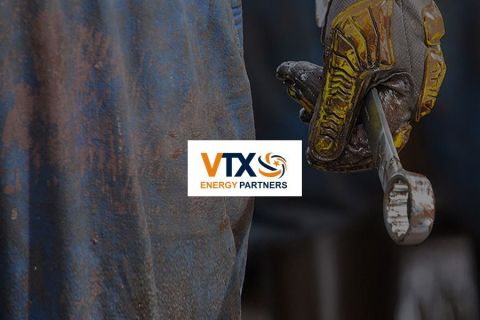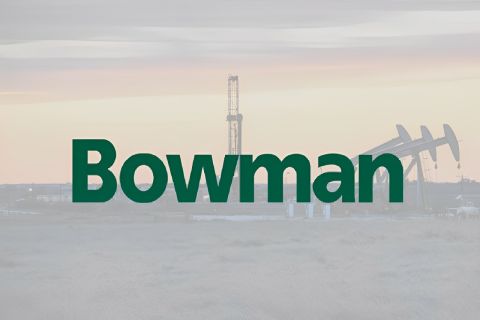Founded in late 1954, Apache Corp. has become a giant oak in the domestic and international arenas, typifying the growth of the big independents. fter World War II, the U.S. government wanted very much to build domestic oil-production capacity. So it provided tax incentives for drilling to the private sector in the form of deductions against income to enable recovery of dry-hole costs. "That looked like a good deal," says Raymond Plank. The Minneapolis native, a B-24 bomber pilot in the Pacific in World War II and a graduate of Yale University in 1946 with a bachelor's degree in international relations, already had a bookkeeping service for small businesses in the Twin Cities area. "So in the early 1950s we started doing tax returns for high-net-worth individuals who were investing in oil and gas drilling programs." It didn't take the tax- and accounting-savvy Plank long to realize that some of the promoters of these drilling programs were engaging in unethical practices, a tip he passed along to his clients who were oil and gas investors. They, in turn, asked him to represent them in oil and gas investments. That was early 1954. On December 6 that year, Plank, together with partners Truman Anderson and Charles Arnao, put together then-Minneapolis-based Apache Oil Corp. for the purpose of finding, producing and marketing oil and gas. With the flip of a coin, Plank was chosen the company's president. Starting with $250,000 of seed capital put up by 173 shareholders, the firm in 1955 drilled its first wells in Cushing, Oklahoma. The first came in at a not-so-gushy seven barrels of oil per day; the second, at 700 daily barrels of oil. Nonetheless, closing the books on 1955, Apache earned $12,535 on gross revenues of $190,000. Meanwhile, operated oil production averaged 800 barrels per day from wells in Oklahoma and Kansas. Through its various iterations since then as a drilling-program sponsor, a diversified-investment partnership, an oil and gas master limited partnership (MLP) and a corporation, now-Houston-based Apache Corp. (NYSE: APA) has become an international-scale oil and gas giant with core operations in the U.S., Canada, Egypt, the U.K. North Sea and Australia. Today, Apache has assets of $19.3 billion and a market cap of around $23 billion. At year-end 2005, the company's revenues were nearly $7.6 billion; its net income, more than $2.6 billion. Concurrently, its daily natural gas production was almost 1.3 billion cubic feet (Bcf); daily oil output, 240,000 barrels. Total proved reserves, meanwhile, were close to 2.12 billion barrels of oil equivalent (BOE). How did such growth occur amid so many up and down cycles in the oil and gas industry? To find out, Oil and Gas Investor recently visited with Apache's founder and chairman. Plank's more than 50 years of experience in the oil patch yields insight not only into how Apache dealt with those peaks and valleys, but also about how the industry has evolved. Investor How has the oil and gas industry changed in the past 25 years? Plank The biggest change has been the advance of technology, seismic as well as drilling and completion technology. As a result, the industry is recovering a larger percentage of reserves in place today than it did 25 years ago. Nonetheless, the hydrocarbon targets are smaller, at least in North America. But this is being offset, as I said, by a greater ability to find those targets. Another major change that's occurred: when Apache started, there were about 16,000 independents out there and, at one point, we were number 16,000. But during the past 50 years, there has been a tremendous fallout in that population. Some producers got out during a period of high prices; others like ourselves rode the cycles and built their companies through them. Today, we're among the top 50 U.S. independents, with a market cap of around $23 billion. Investor Has the fact of smaller oil and gas targets in North America caused Apache to broaden its focus to international areas? Plank In part, it has. I persuaded the board about 15 years ago to start allocating about 10% of our cash flow to activities outside the U.S., and that has caused us to grow fairly rapidly. Today, as much of our earnings and revenues come from outside the U.S. as they do from domestic operations. Egypt is very important, as well as Canada, the U.K. North Sea and Australia. Investor Apache got out of the drilling-program business in 1986, but prior to that, you started the first oil and gas MLP. What made you choose that structure? Plank Our drilling program holders were looking for liquidity. They had invested anywhere from $5,000 to $1 million with us and the form of that investment was in program units. But those unit interests were difficult to sell. By offering to exchange those units into a master limited partnership, we gave those investors liquidity in the form of publicly traded units underlying their investment, much the same way the shares of stock in a corporation do. The big difference, however, was that the partnership form of investment carried over in the MLP structure, so the individual investor got taxed only once-at the distribution level. Investor What caused you to abandon this structure? Plank Very volatile commodity prices. We wanted to be in a position to return capital to our investors. But when oil and gas prices started moving up and down very quickly-and very extensively-we realized we couldn't grow the partnership and pay investors a return. So we abandoned the MLP structure in the mid-1980s and gave our investors the choice of doing one of three things: sell the units they had, exchange the units on a taxable basis for shares in Apache Corp. or, on a non-taxable basis, exchange the units for shares of stock in a small, separate public company. They chose all three avenues of liquidation and that ended the era of the MLP for us. Investor Since then, what strategy has Apache pursued as a corporation? Plank In our initial quest for critical mass, we made the choice that we would use the holdings we acquired through our drilling-program days as the base for a larger public company-and that we would grow via the acquisition of assets, which we still do, as well as periodic equity and convertible-debt offerings. Investor Talk a little about your acquisition strategy, pre- and post-1991. Plank One thing we became very good at in the 1980s and 1990s was the acquisition of properties from major oils that were consolidating their holdings or getting out of certain areas to pursue larger-size initiatives in other parts of the world. Up through 2004, major acquisitions have included two Gulf of Mexico purchases and one asset buy in Canada from Shell, the purchase of U.S. onshore properties from Amoco, and asset buys from Texaco, ConocoPhillips, BP, ExxonMobil, Repsol and Occidental Petroleum. All these were negotiated transactions rather than going to auction. Investor Were all these North American acquisitions? Plank All but a couple. In 2001, we bought Repsol's interests in, and operatorship of, its concessions in Egypt's Western Desert, including the prolific Khalda concession. Then in 2003, BP expressed interest in having us buy its holdings in the Forties Field in the U.K. North Sea. Those deals turned out to be very good for us. Our people are very adept at adding value to partially depleted fields where we have a cost advantage and a sense of urgency in doing that kind of work. At Forties, we believe there's an additional 300- to 400 million barrels of recoverable oil-reserve potential. Meanwhile, Khalda is the site of our largest discovery ever-the 2- to 3 trillion-cubic-foot Qasr gas find-and there's still a lot of running room left on that concession. Investor The most notable of all of Apache's acquisitions? Plank Up through 1991, it was probably the acquisition of Amoco's onshore properties throughout the U.S. That purchase alone just about doubled the size of Apache and was the primary engine of change that caused us to move from Denver to Houston. Investor And since 1991 you've continued to grow through acquisitions. Plank Yes. That year, for instance, we got into the Carnarvon Basin offshore Western Australia through the acquisition of a small nonoperated interest in nine wells on 500,000 undeveloped acres. Then two years later, we became one of the largest leaseholders in the region with the purchase of Hadson Energy Resources. That acquisition gave us overnight nearly 12 million BOE of reserves and 3.3 million net undeveloped acres. Just last year, we added proved reserves of 32 million BOE in the region-on top of aggregate gross reserve additions of 300 million BOE in 2003 and 2004. Investor I take it that Apache's entry to Egypt in 1994 was also through acquisition. Plank No, in Egypt we got in through doing a seismic shoot on the Qarun concession, seeing something we liked, drilling a discovery, then later in 1996 merging with Phoenix Resource Cos. So it was initially an exploration effort, based on high confidence in the potential of the country's Western Desert, subsequently augmented by the Phoenix acquisition and the purchase of Repsol's producing assets. Investor How big of a contribution does Egypt make to Apache's overall revenue stream, production and reserves? Plank Last year, the Egyptians received $1.8 billion from wells we drilled there. That was its revenue-sharing interest and taxes to the government. Our revenue interest was about $1 billion. Meanwhile, our net annual production there in 2005 was 30.2 million BOE; estimated proved reserves, net to us, 271 million BOE. Investor Apache's return to Canada in 1995-that was through acquisition? Plank Yes, through the merger with Dekalb Energy Canada Ltd. That move underscored our belief at the time that the natural gas market would become more North American than domestic, that diversification in selected basins globally enhanced the potential for future growth, and that a position in the Western Canadian Sedimentary Basin represented the greatest opportunity to capitalize on the voracious appetite for energy in the Lower 48. Beginning in 1999, we commenced a three-year string of acquisitions from Shell, ConocoPhillips and Fletcher Challenger that multiplied the original Dekalb reserves nearly fivefold. Today in Canada, where we've been plowing about $1 billion a year for the past three years, we have net annual production of 31.7 million BOE and estimated proved reserves of 565 million. But don't be misled into thinking that, since 1991, all our growth has come from acquisitions. On the contrary, growth through the drillbit, backed by the science, has taken on a greater significance for us. Since the early 1990s, we've been very active drillers, not only in Canada and internationally, but also in the Gulf of Mexico and our Central Region which includes Oklahoma and West Texas. This year, in the Gulf of Mexico alone, we plan to drill 72 shelf wells. Notably, we're continuing to grow through retained earnings-not through the issuance of more stock. Investor What has been the greatest growth period for Apache? Plank When we came to Houston in 1992, the total value of the company was just north of $500 million, so our greatest growth occurred afterwards as the result of both acquisitions and discoveries, such as Qasr, during a period of rising commodity prices. Investor The biggest challenge facing the oil and gas industry? Plank Without an energy policy, this country is up the creek without a paddle. Energy demand is so strong that the exporting nations of the world now have the power to blackmail us. That's the biggest problem. In addition, we as a nation haven't really gotten serious about environmental or conservation responsibility. This doesn't mean Apache or other oil companies aren't responsible. It means that the U.S. public really doesn't seem to care about these issues. It would rather continue to be 5% of the world's population that consumes 25% of the world's energy. Investor What would you like to see done? Plank I'd like to see consumption of oil and gas curtailed, and see us work out better political rapport internationally to assure longer-term sources of supply from international exporters versus being blackmailed on prices. Investor Your take on windfall-profits tax proposals? Plank Politicians say they're opposed to seeing higher prices at the pump. But the fact is that if such a tax is imposed, those who explore for and develop oil and gas reserves will have less money with which to carry out those activities. Investor How does Apache grow from here? Plank We're one of the largest leaseholders in the world for a company our size, with more than 34.2 million gross acres. So we have tremendous unrealized resource potential in our portfolio. Investor Where's the greatest remaining resource potential? Plank The highest risk with the greatest potential is Australia, followed by Egypt. Also, the North Sea and Canada are very prospective. In addition, we've just gone into Argentina with a very substantial acreage position and we're optimistic about our ability to grow there as well. Investor What do you feel should be the attitude of Washington and the American public toward the oil and gas industry? Plank They ought to be more supportive of domestic exploration and production rather than looking at a windfall-profits tax every time the industry gets a leg up. And I don't mean more supportive in terms of subsidies. This industry can carry its own weight. What I mean is we don't need the harassment.
Recommended Reading
VTX Energy Quickly Ramps to 42,000 bbl/d in Southern Delaware Basin
2024-09-24 - VTX Energy’s founder was previously among the leadership that built and sold an adjacent southern Delaware operator, Brigham Resources, for $2.6 billion.
US Drillers Cut Oil, Gas Rigs for Third Week in a Row
2024-10-04 - The oil and gas rig count fell by two to 585 in the week to Oct. 4.
EY: How AI Can Transform Subsurface Operations
2024-10-10 - The inherent complexity of subsurface data and the need to make swift decisions demands a tailored approach.
Bowman Consulting to Manage, Monitor Delaware Basin Wells
2024-10-14 - Bowman Consulting Group’s scope of work includes conducting detailed field surveys of above-ground infrastructure assets across well sites of up to to 8 acres.
E&P Highlights: Oct. 7, 2024
2024-10-07 - Here’s a roundup of the latest E&P headlines, including a major announcement from BP and large contracts in the Middle East.
Comments
Add new comment
This conversation is moderated according to Hart Energy community rules. Please read the rules before joining the discussion. If you’re experiencing any technical problems, please contact our customer care team.




